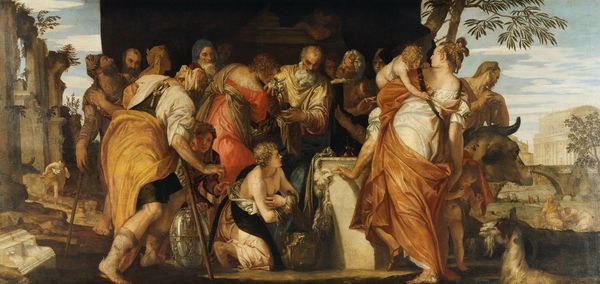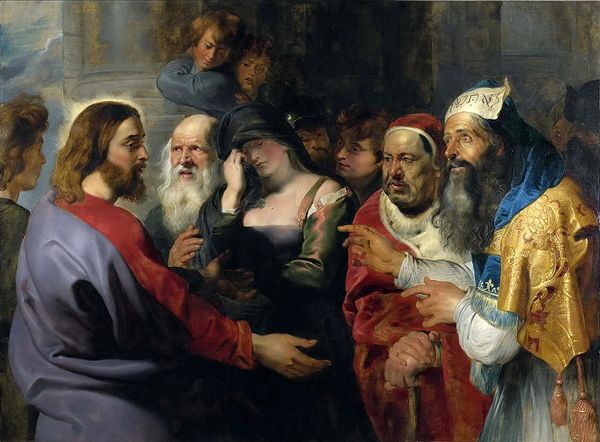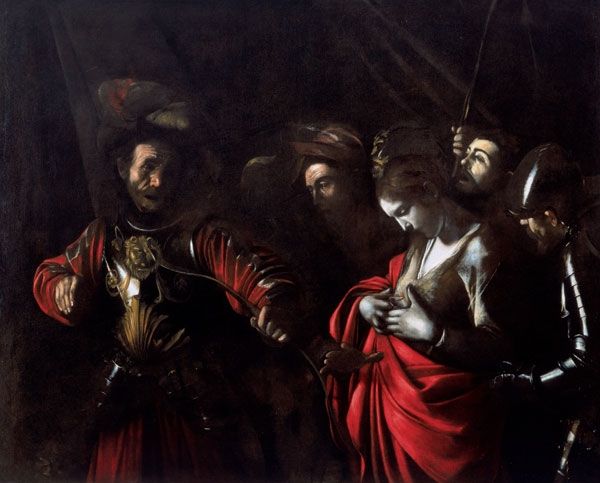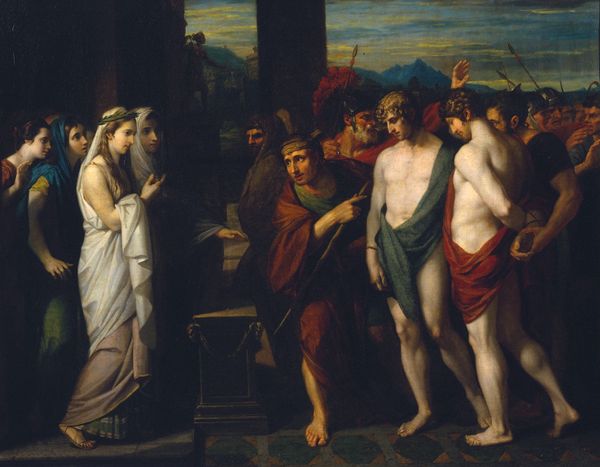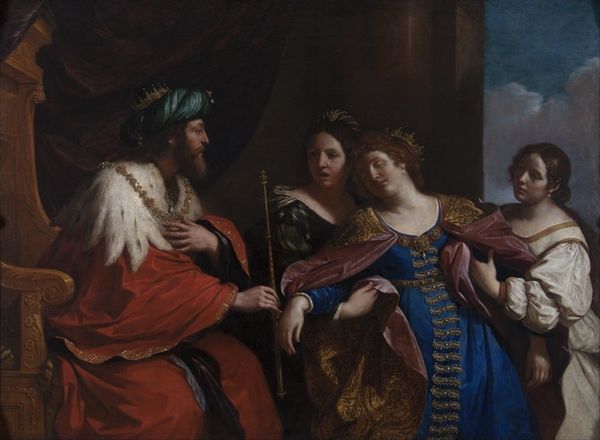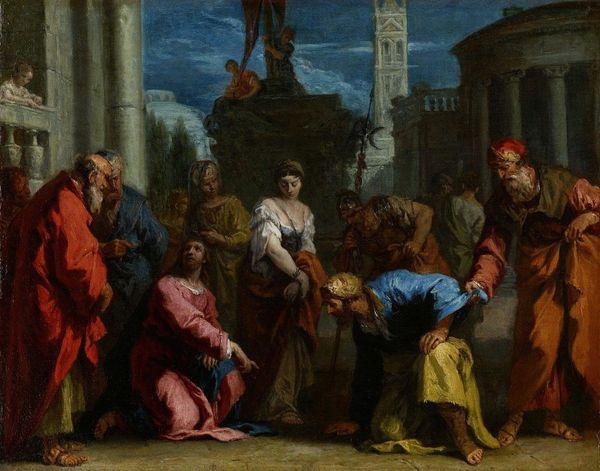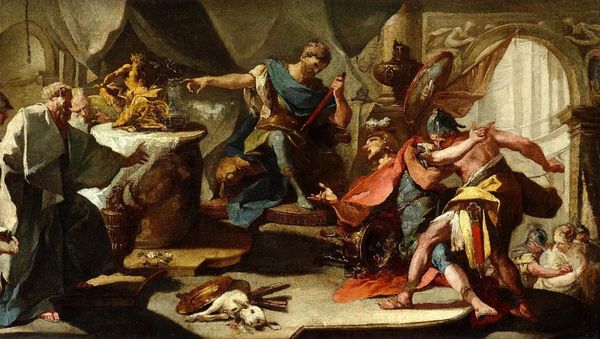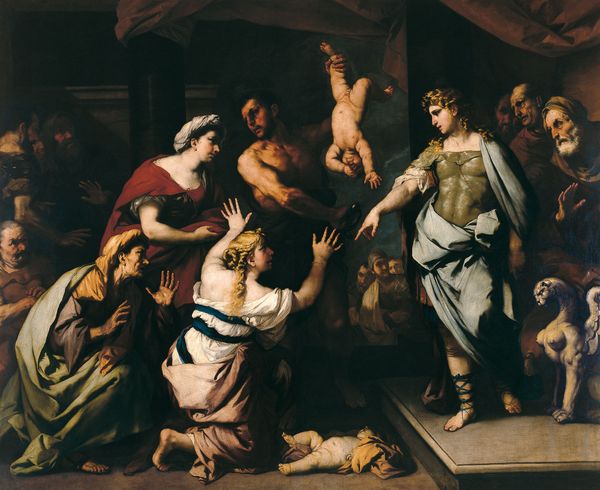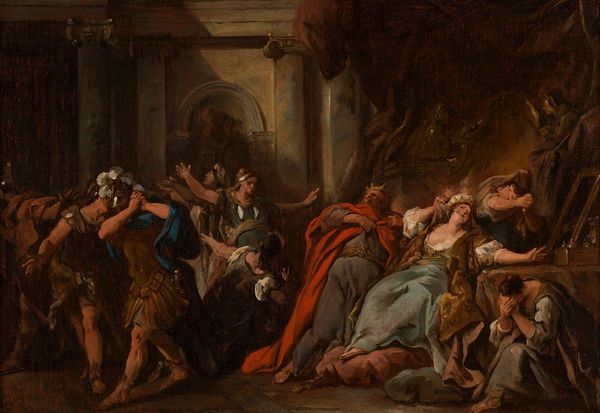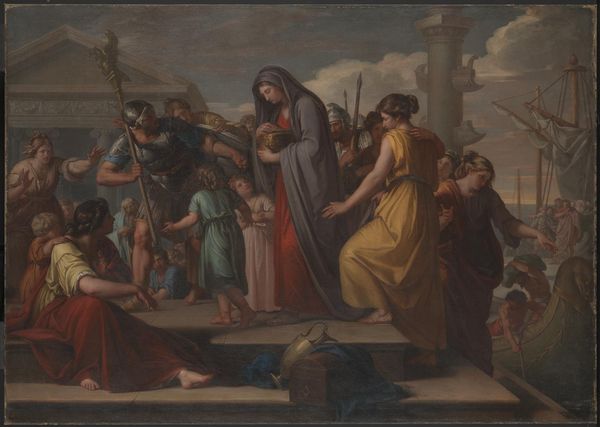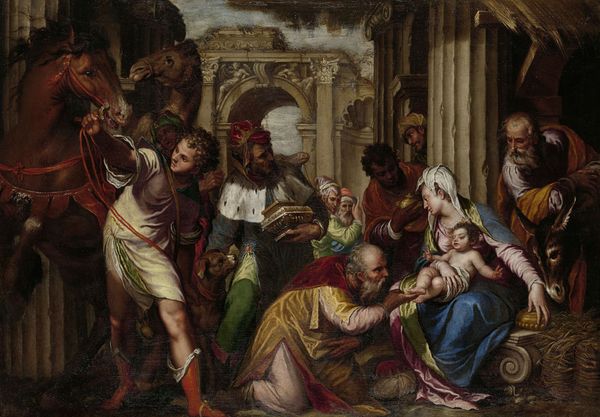
Dimensions: support: 1276 x 2013 mm frame: 1590 x 2327 x 150 mm
Copyright: CC-BY-NC-ND 4.0 DEED, Photo: Tate
Editor: Here we have Edward Armitage’s “The Remorse of Judas,” currently at the Tate. The stark contrast between Judas's anguish and the priests' indifference is quite striking. What can you tell me about its historical and cultural context? Curator: Notice how Armitage stages this scene. It's not just about Judas's guilt, but the institution's role. Consider the politics of representing religious figures in 19th-century Britain. Does the composition seem to critique the Church's power? Editor: It does feel critical, the priests seem unmoved by Judas's despair. I didn’t immediately think about its commentary on institutional power. Curator: Exactly. Art often reflects and shapes societal views. Reflect on what this work might suggest about Victorian anxieties surrounding religion and morality. Editor: Thanks, that gives me a lot to think about regarding the role of institutions in art. Curator: Likewise, it's fascinating to examine how artists like Armitage engage with historical narratives to comment on contemporary issues.
Comments
tate 8 months ago
⋮
http://www.tate.org.uk/art/artworks/armitage-the-remorse-of-judas-n00759
Join the conversation
Join millions of artists and users on Artera today and experience the ultimate creative platform.
tate 8 months ago
⋮
Armitage was one of the main exponents of public art in Britain, having trained in Paris under the historical painter Paul Delaroche. This ambitious religious painting was exhibited at the Royal Academy in 1866 and immediately afterwards was presented by the artist to the National Gallery. It depicts the passage in St Matthew when the repentant Judas offers back the thirty pieces of silver to the high priests who are shown turning their backs on him with disdain. A vulture flies overhead as a symbol of blood and ill-omen, adding to the portentous nature of the scene. Gallery label, November 2016
